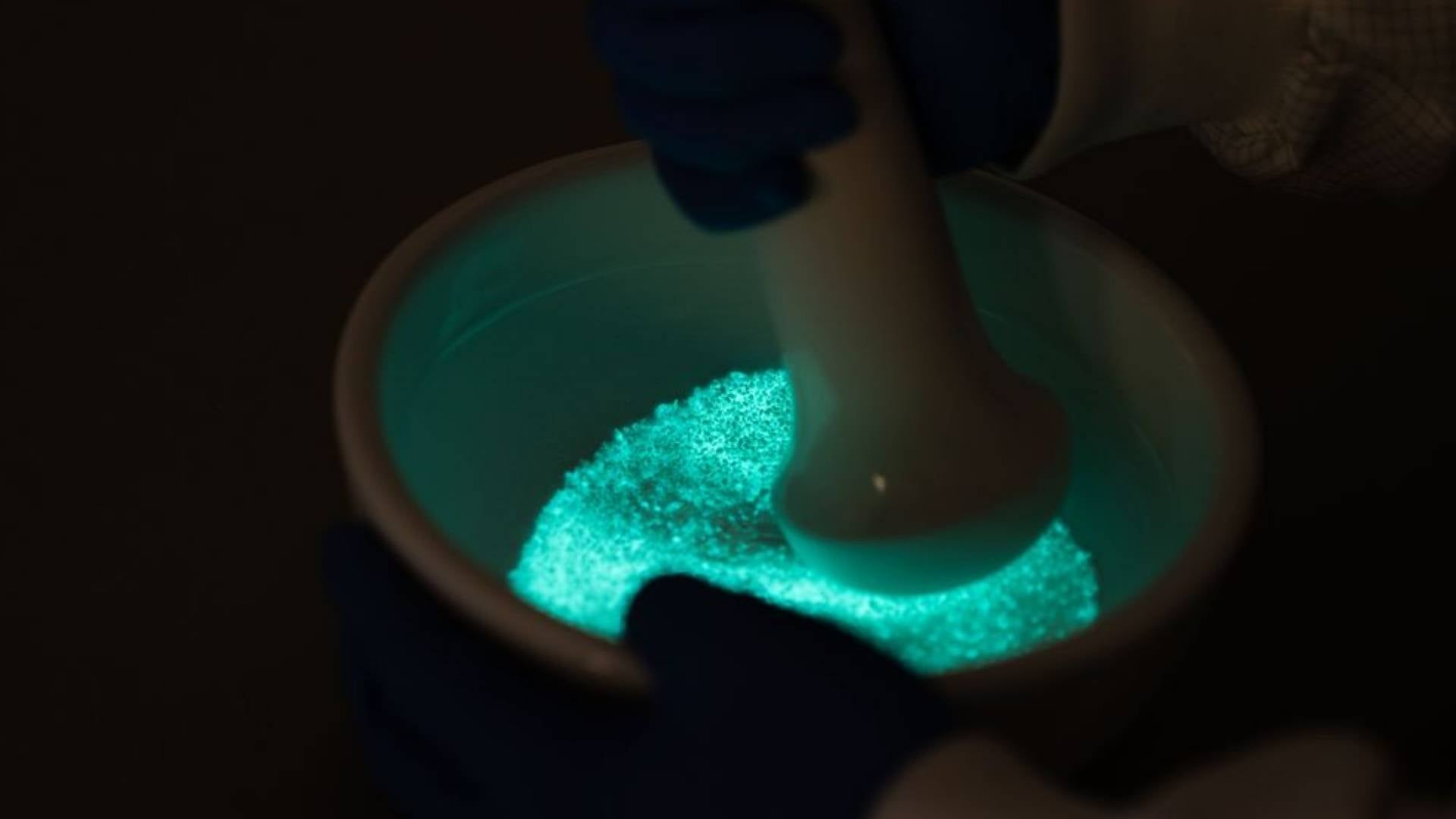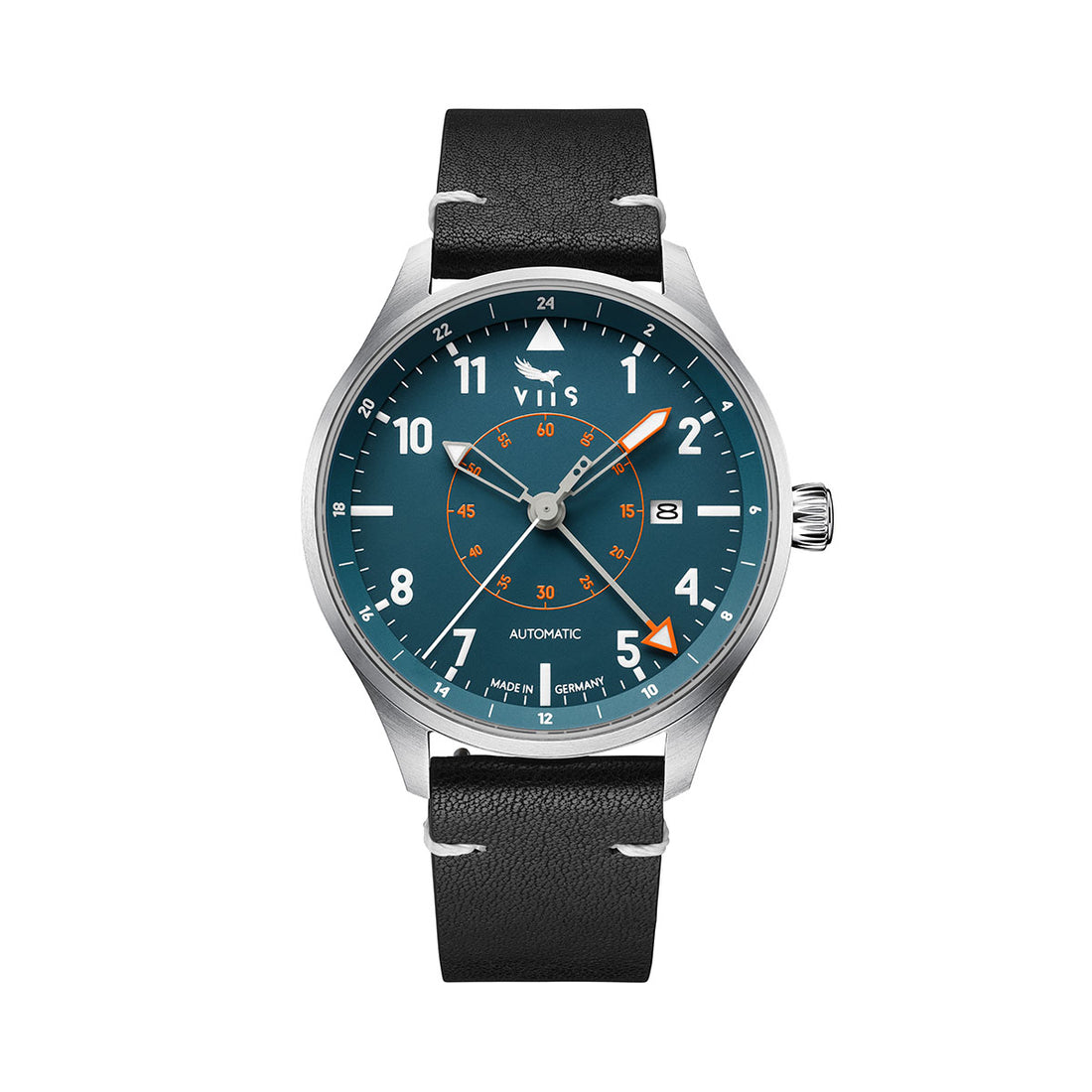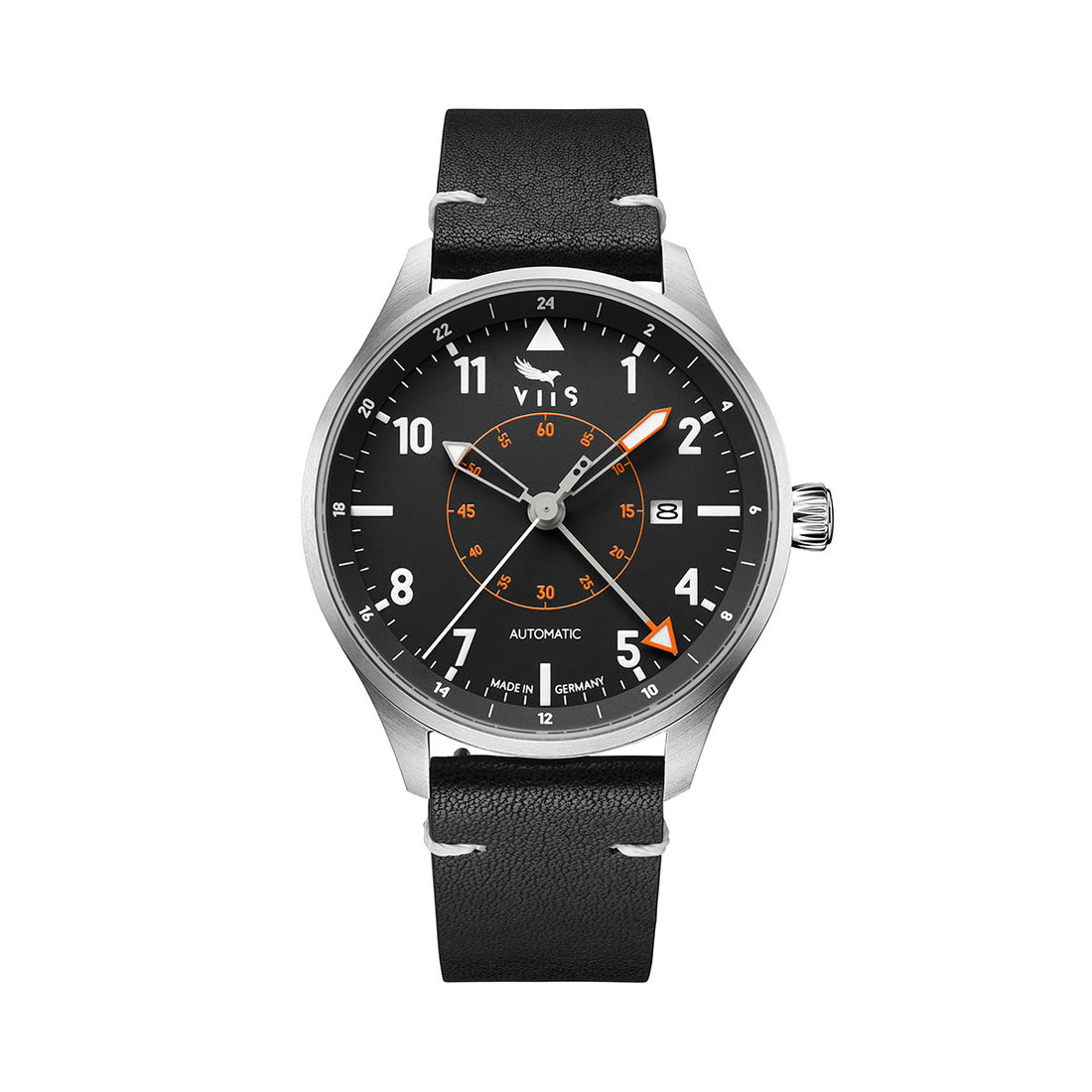Shine bright dial!
Readability of my mechanical watch in absolute darkness – check! And all thanks to Super-LumiNova®. This innovative luminescent material makes watches glow in the dark—completely free of radioactive radiation. In this blog article, we’ll give you a brief introduction to Super-LumiNova®, explain how it works, and highlight its advantages. We’ll also take a look at its fascinating history and explore why it has become the gold standard for watch luminescence today.
What is Super-LumiNova?
Super-LumiNova® is an innovative luminescent material used in the watch industry to ensure optimal readability of dials, bezels, and hands in the dark. It is a ceramic afterglow pigment based on strontium aluminate, functioning like tiny light storage units. These pigments absorb natural or artificial light, store it as energy, and gradually release it in the dark as visible light.
Unlike earlier luminescent materials such as radium or tritium, Super-LumiNova® is completely non-radioactive and therefore entirely safe for humans. With its long-lasting glow and eco-friendly properties, Swiss Super-LumiNova® - developed by the Swiss company RC TRITEC AG has become the industry standard and revolutionized the world of luminous watches.
How does Super-LumiNova work?
Super-LumiNova® works through a process called phosphorescence. It consists of strontium aluminate infused with tiny traces of rare earth elements. This material absorbs and stores energy from natural or artificial light, then gradually releases it in the dark as visible light - making the watch glow. The afterglow can last for several hours, although its intensity slowly fades over time.
The duration and intensity of a watch’s glow depend on the strength of the light source and the specific type of Super-LumiNova® used - ranging from a few minutes to an entire night. To fully restore their luminosity, watches coated with Super-LumiNova® need to be exposed to light again to "recharge." This process can be repeated indefinitely, as Super-LumiNova® retains its glowing properties for years without fading.
How did Super-LumiNova come about?
Caution, Poisonous! The Radium Scandal and the Tragic Story of the 'Radium Girls'
The history of luminous watches began at the beginning of the 20th century, when watchmakers began experimenting with luminescent paint. Radioactive substances based on radium were used to make watches glow. It may be shocking to us today, but at the time the substance was considered an energetic substance with health benefits.
Radium offered a long-lasting and continuous glow without the need for charging. However, as it later turned out, the substance emitted unhealthy, highly radioactive radiation that caused cancer. This not only seriously harmed the wearer of the watch, but also the workers in the watch factories, who are now known as "Radium Girls". Their job was to apply the radioactive paint to the watches. They had the habit of moistening their brushes with their tongues before applying the paint. The result: illnesses such as anemia, tongue cancer, and jaw necrosis—along with numerous deaths caused by repeated radium exposure.
Subsequently, companies began to switch to less dangerous and weakly radioactive substances such as promethium or tritium. The latter became the industry standard from the 1960s onwards. After the Chernobyl reactor accident in 1986, people's sensitivity to radioactive substances increased, which also had an impact on the watch industry. Despite its functionality, luminous materials based on tritium were no longer used from the end of the 20th century onwards.
Is Super-LumiNova toxic?
Clear answer: No! The development of LumiNova® in Japan in the early 1990s marked a breakthrough for the watch industry. The company Nemoto & Co. succeeded in creating LumiNova® - a phosphorescent, non-radioactive afterglow pigment. Based on alkaline earth aluminates, this material comes in various colors, is highly durable, offers long-lasting luminosity, and is far safer than its predecessors. LumiNova® replaced radioactive tritium as the industry standard and revolutionized the world of luminescent watches.
Through a joint venture between the Japanese company Nemoto & Co. and the Swiss company RC Tritec AG, LumiNova® entered the European market and has been continuously improved by the Swiss ever since. Today, this enhanced luminescent material is known as Swiss Super-LumiNova®. With greater luminosity and longer afterglow times than LumiNova®, this advanced technology has helped the watches of many renowned international brands shine brighter than ever.

What are the advantages of Super-LumiNova?
 Nice-to-know:
Nice-to-know:
Despite the wide range of luminous colours - from white and beige to violet, orange, and blue - green and blue are the most commonly used for watches. The reason: these two colours are the easiest for the human eye to perceive in the dark. The most popular Super-LumiNova® variants are C3 and BGW9. C3 appears yellowish-beige in daylight and glows green in the dark, while BGW9 is white in daylight and emits a green-blue glow at night. C3 offers a relative luminosity of 100%, while BGW9 has 95%. However, BGW9 performs better in low-light conditions, as the human eye becomes more sensitive to blue tones as brightness decreases.
Perfection that shines
Albert Paul Zeller, Managing Director of RC Tritec AG, has the privilege of supplying nearly the entire watch industry with his Swiss Super-LumiNova® pigments - and we proudly rely on the Swiss original as well. The VIIS Flieger GMT 42 features Super-LumiNova® BGW9 in all colour variants - a luminescent material that is valued for its brightness and long afterglow. We exclusively use Swiss Super-LumiNova® in our watches, ensuring bright and long-lasting luminosity for perfect readability, even in darkness.
Experience firsthand how this advanced luminescent material elevates your timepiece - not just with its design, but with its outstanding luminosity. Discover our VIIS Flieger GMT 42 now and find the perfect watch to keep you shining - even in the dark!





